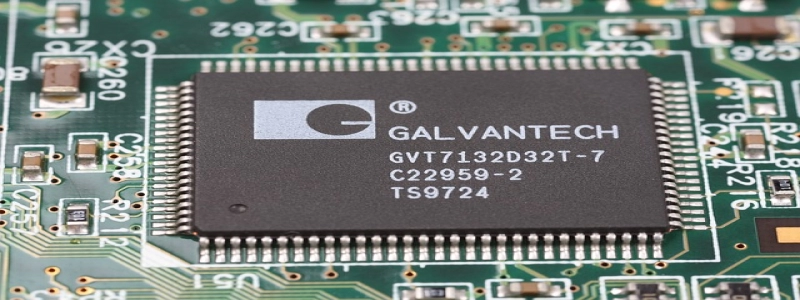1. Introduction to N Type Coaxial Cable Connector
1.1 Definition
1.2 Function
1.3 Common Uses
2. Structure and Components of N Type Coaxial Cable Connector
2.1 Outer Body
2.2 Inner Body
2.3 Pin
2.4 Gasket and Insulator
3. Advantages of N Type Coaxial Cable Connector
3.1 Low-loss Connection
3.2 High Power Handling Capacity
3.3 Wide Frequency Range
4. Installation Process of N Type Coaxial Cable Connector
4.1 Preparing the Cable
4.2 Attaching the Connector
4.3 Securing the Connection
5. Troubleshooting and Maintenance of N Type Coaxial Cable Connector
5.1 Checking for Loose Connections
5.2 Inspecting the Connector for Damage
5.3 Replacing Faulty Connectors
6. Konklusion
6.1 Summary of N Type Coaxial Cable Connector
6.2 Importance in Communication Systems
6.3 Future Developments
1. Introduction to N Type Coaxial Cable Connector
1.1 Definition
The N type coaxial cable connector is a type of RF (radio frequency) connector used to connect coaxial cables in communication systems. It features a threaded coupling mechanism and is widely used for its durability and high performance.
1.2 Function
The main function of an N type coaxial cable connector is to provide a reliable and secure connection between coaxial cables. It ensures proper signal transmission and minimizes signal loss, making it suitable for high-frequency applications.
1.3 Common Uses
N type coaxial cable connectors are commonly used in various applications, including wireless communication systems, broadcasting equipment, radar systems, and scientific research instruments. They are particularly favored in environments with high vibration or extreme weather conditions.
2. Structure and Components of N Type Coaxial Cable Connector
2.1 Outer Body
The outer body of an N type coaxial cable connector is typically made of metal, such as brass or stainless steel. It provides robust protection for the inner components, ensuring the connector’s durability and resistance to environmental factors.
2.2 Inner Body
The inner body houses the pin and insulator, providing insulation and mechanical support. It is designed to maintain proper impedance and minimize signal loss during transmission.
2.3 Pin
The pin is the central conductor of the N type coaxial cable connector. It is responsible for carrying the electrical signal from one end of the connector to the other. The pin’s design ensures a secure connection with the corresponding connector on the other end of the cable.
2.4 Gasket and Insulator
The gasket and insulator are crucial components that provide electrical insulation and sealing between the connector and the cable. They prevent signal leakage, maintain impedance, and protect the connector from moisture or dirt.
3. Advantages of N Type Coaxial Cable Connector
3.1 Low-loss Connection
The N type coaxial cable connector offers a low-loss connection, meaning that it minimizes signal attenuation during transmission. It ensures efficient signal transfer and helps maintain the integrity of the transmitted data.
3.2 High Power Handling Capacity
Due to their robust design and high-quality materials, N type coaxial cable connectors have a high power handling capacity. They can withstand high levels of power without compromising signal quality or risking damage to the connector.
3.3 Wide Frequency Range
N type coaxial cable connectors are suitable for a wide frequency range, making them versatile for various applications. They can handle frequencies up to GHz ranges, making them ideal for high-frequency communication systems.
4. Installation Process of N Type Coaxial Cable Connector
4.1 Preparing the Cable
The first step in installing an N type coaxial cable connector is preparing the cable. This involves stripping back the outer layer of the cable to expose the inner conductor and shielding, ensuring the correct length of exposed inner conductor.
4.2 Attaching the Connector
The next step is attaching the connector to the cable. The exposed inner conductor is inserted into the pin of the connector, while the shielding is properly fitted over the outer body. The connector is then tightened using the threaded coupling mechanism to ensure a secure and firm connection.
4.3 Securing the Connection
Once the connector is attached, it is essential to secure the connection. This can be done by using a wrench or pliers to tighten the connector further, ensuring it is firmly connected and providing a reliable signal transmission.
5. Troubleshooting and Maintenance of N Type Coaxial Cable Connector
5.1 Checking for Loose Connections
Regularly checking for loose connections is essential to maintain the performance of N type coaxial cable connectors. Loose connections can cause signal loss or intermittent signal transmission. Ensuring all connectors are tightened correctly helps prevent such issues.
5.2 Inspecting the Connector for Damage
Inspecting the connector for any damage or wear is vital to maintain the connector’s integrity. Any signs of damage, such as a bent pin or cracked insulator, should be addressed immediately to prevent signal degradation or complete signal loss.
5.3 Replacing Faulty Connectors
If a connector is found to be faulty or damaged beyond repair, it should be replaced promptly. This ensures the continued reliability and performance of the coaxial cable system.
6. Konklusion
6.1 Summary of N Type Coaxial Cable Connector
In summary, the N type coaxial cable connector is a reliable and efficient connector widely used in communication systems. Its robust design, low-loss connection, high power handling capacity, and wide frequency range make it an ideal choice for many applications.
6.2 Importance in Communication Systems
The N type coaxial cable connector plays a crucial role in maintaining signal integrity and facilitating seamless communication in various industries. Its durability, ease of installation, and compatibility with high-frequency applications make it an invaluable component in communication systems.
6.3 Future Developments
As technology continues to evolve, advancements in N type coaxial cable connectors can be expected. These may include improvements in impedance matching, higher power handling capacity, or enhanced materials to withstand more extreme conditions. Such developments will further enhance the performance and reliability of communication systems.








